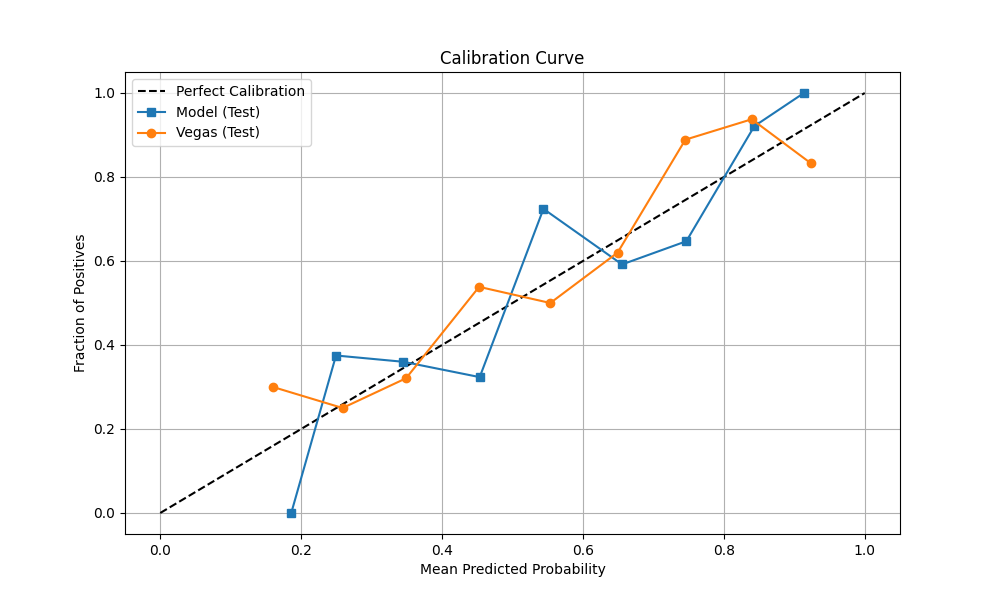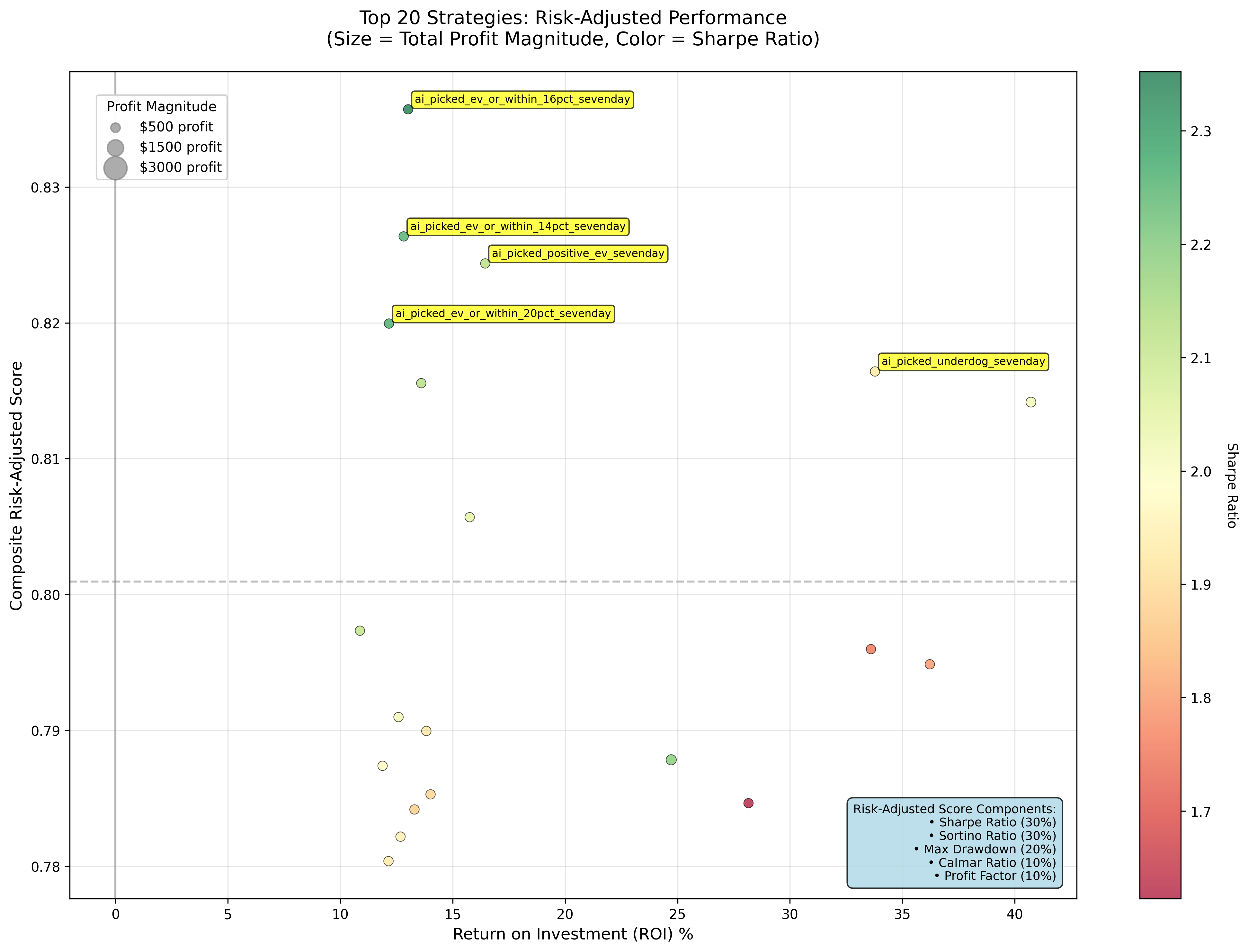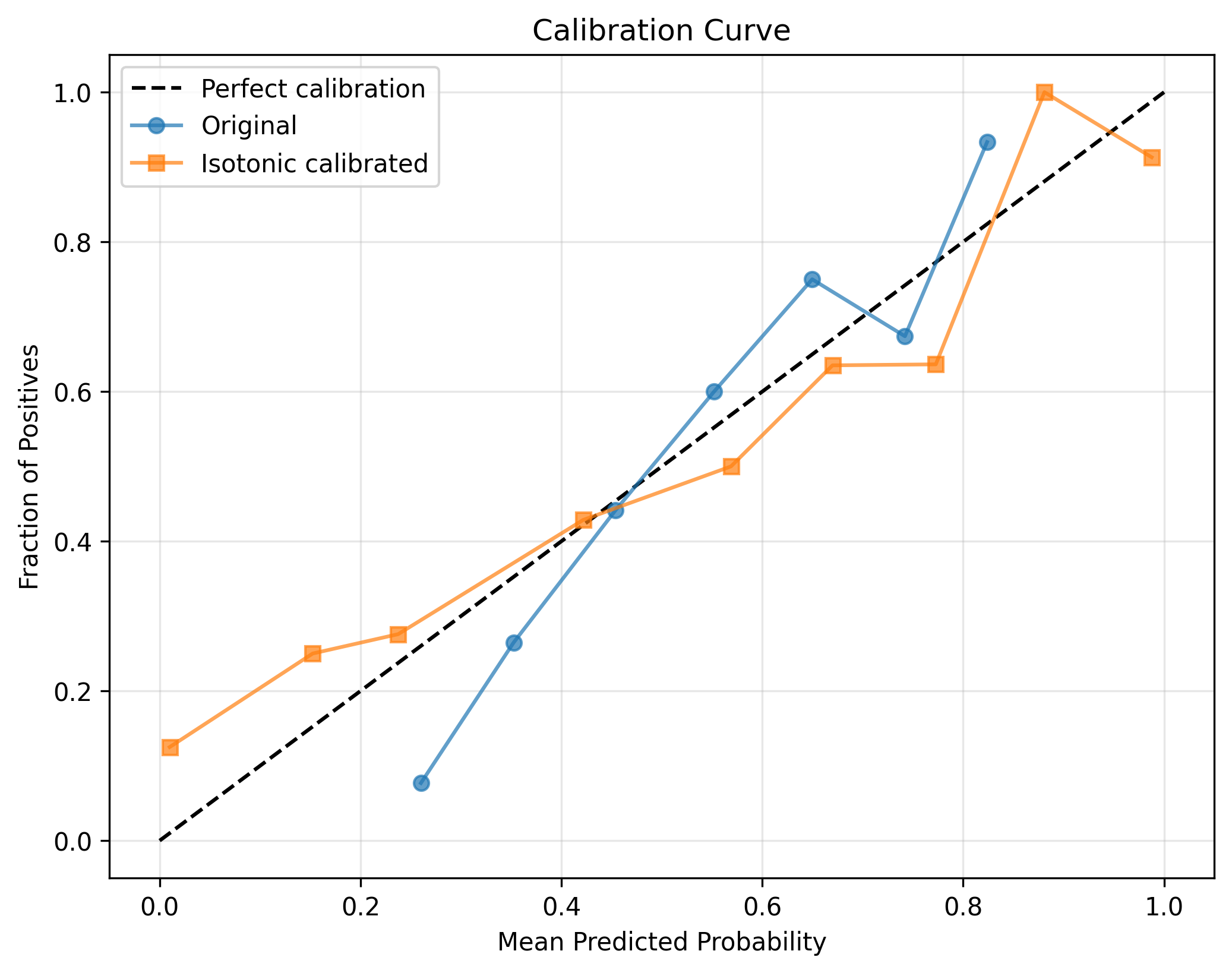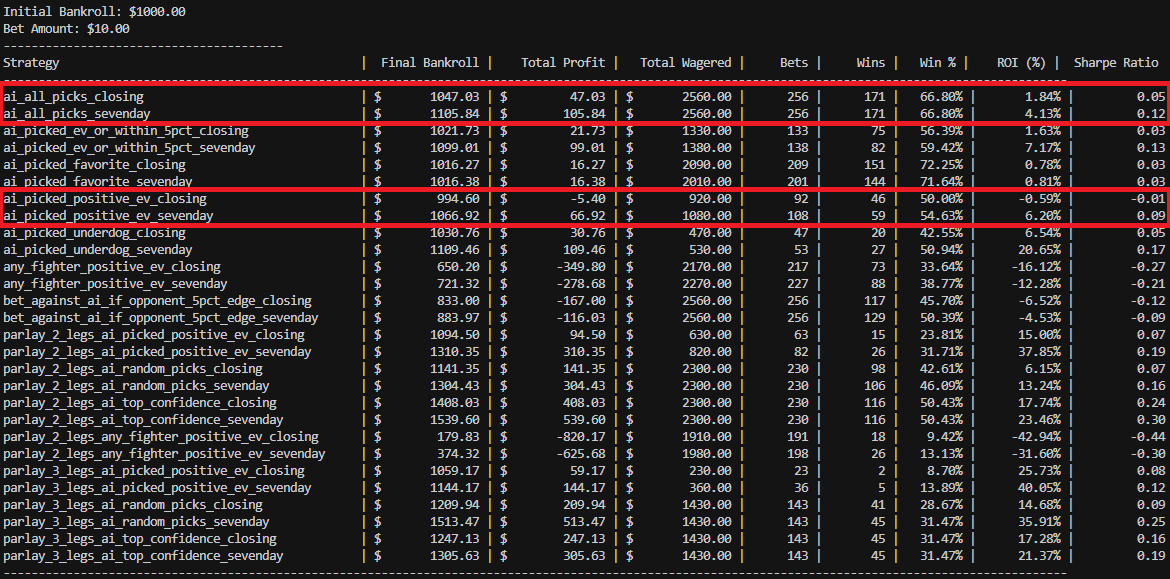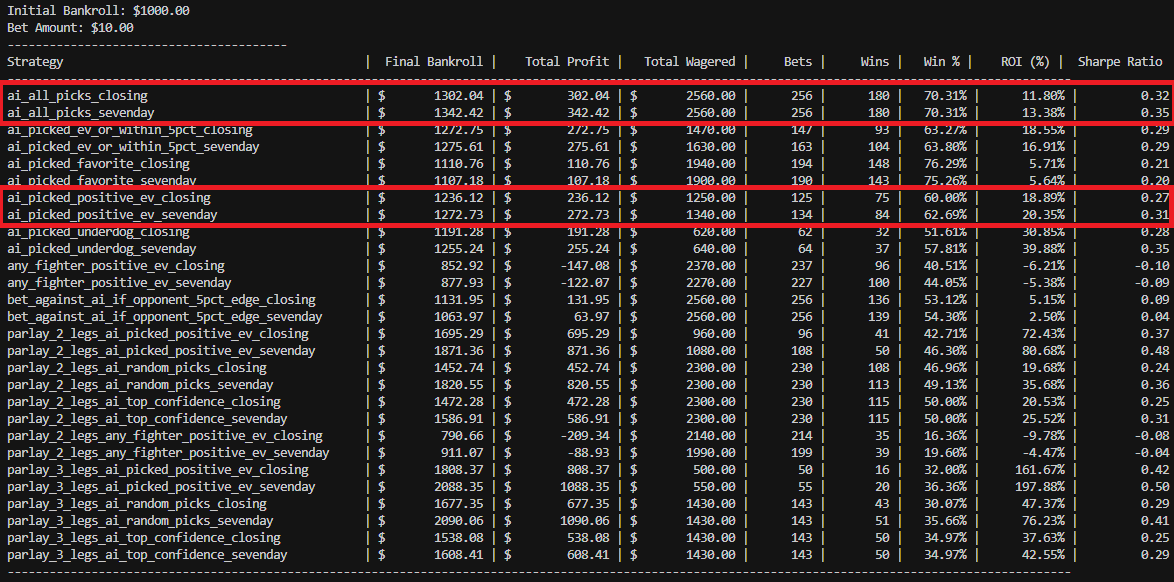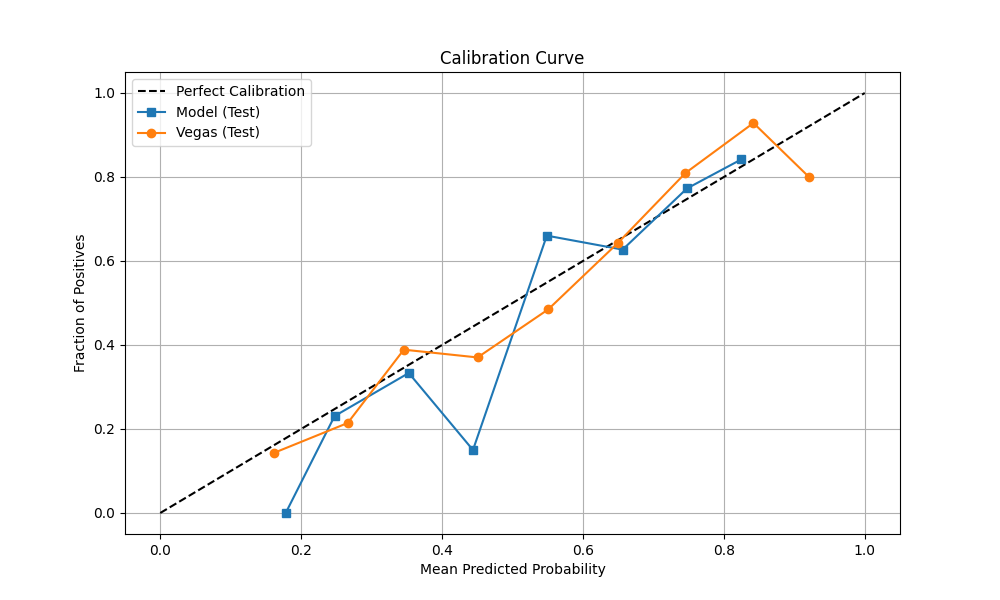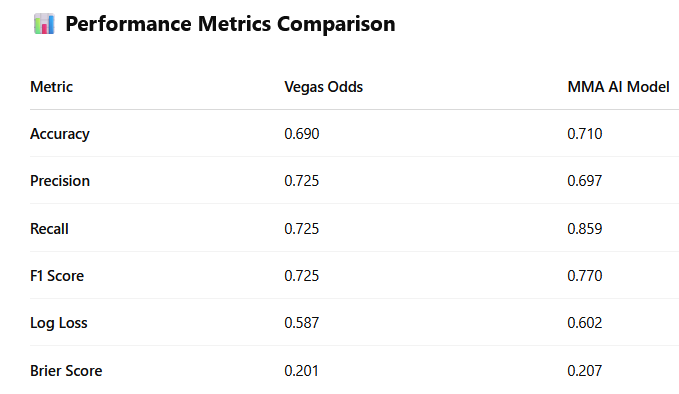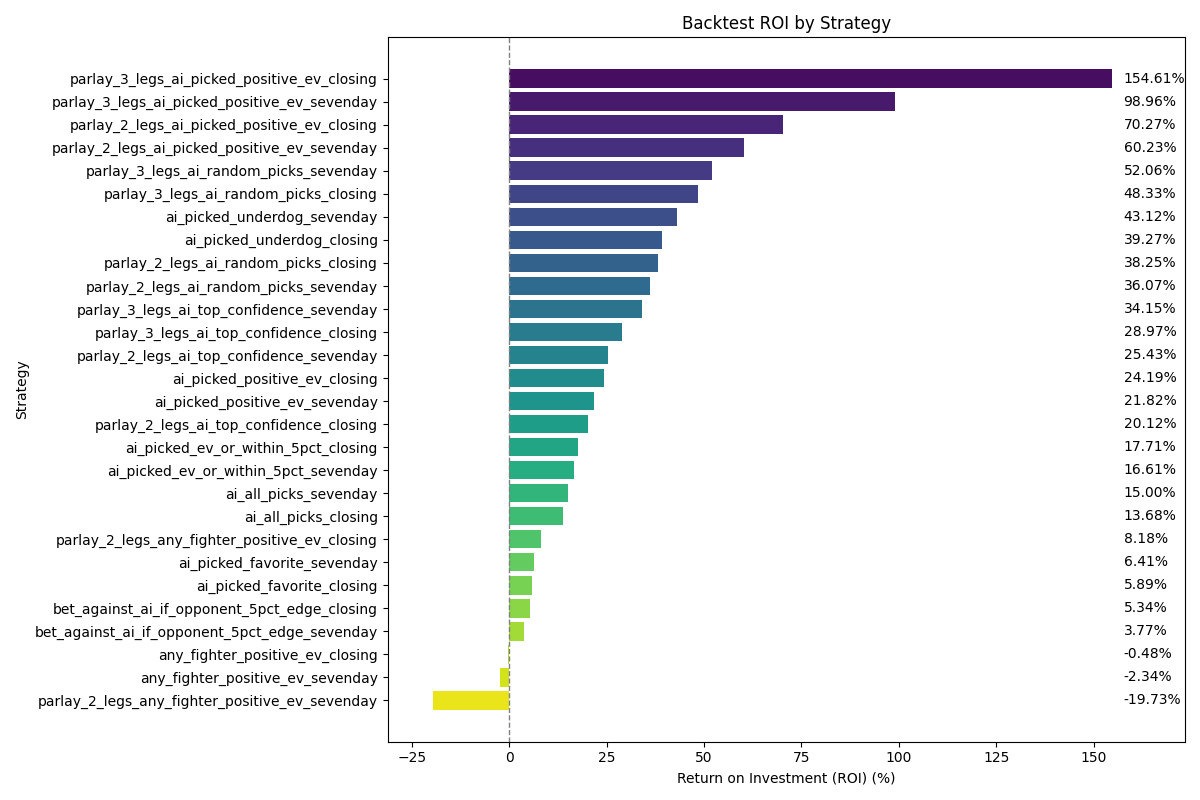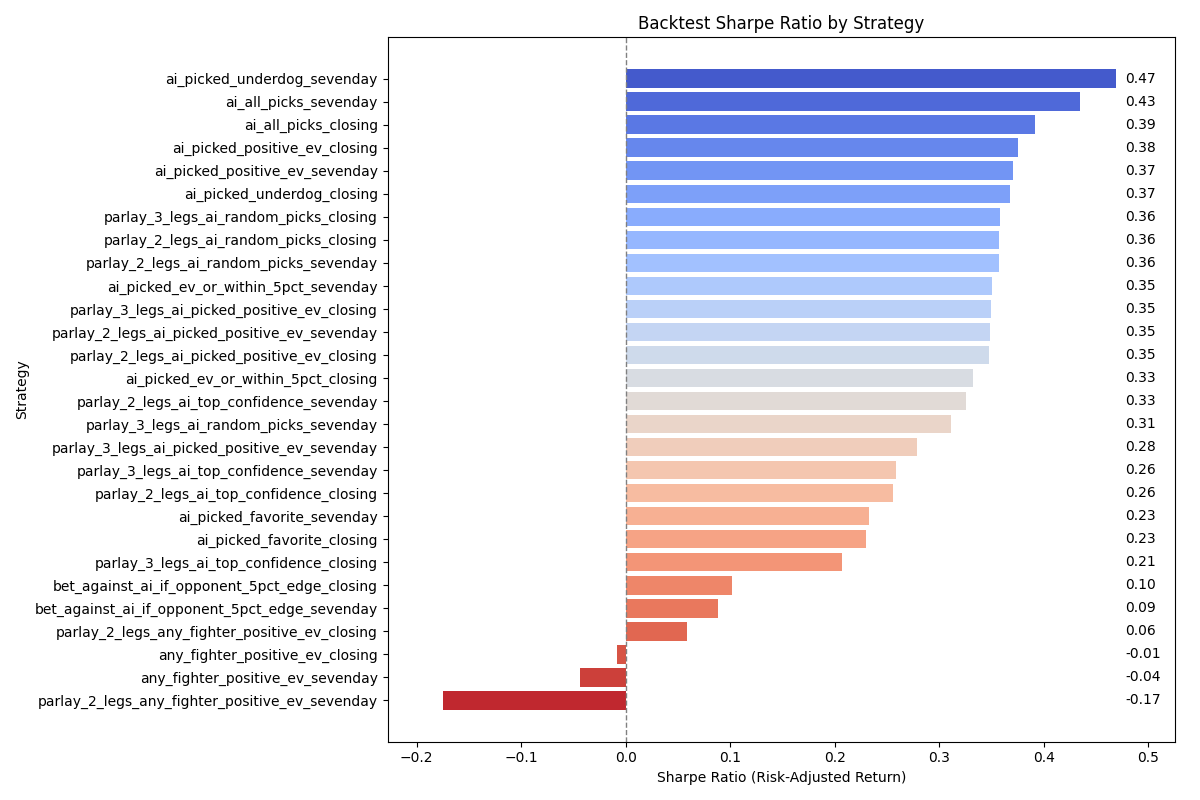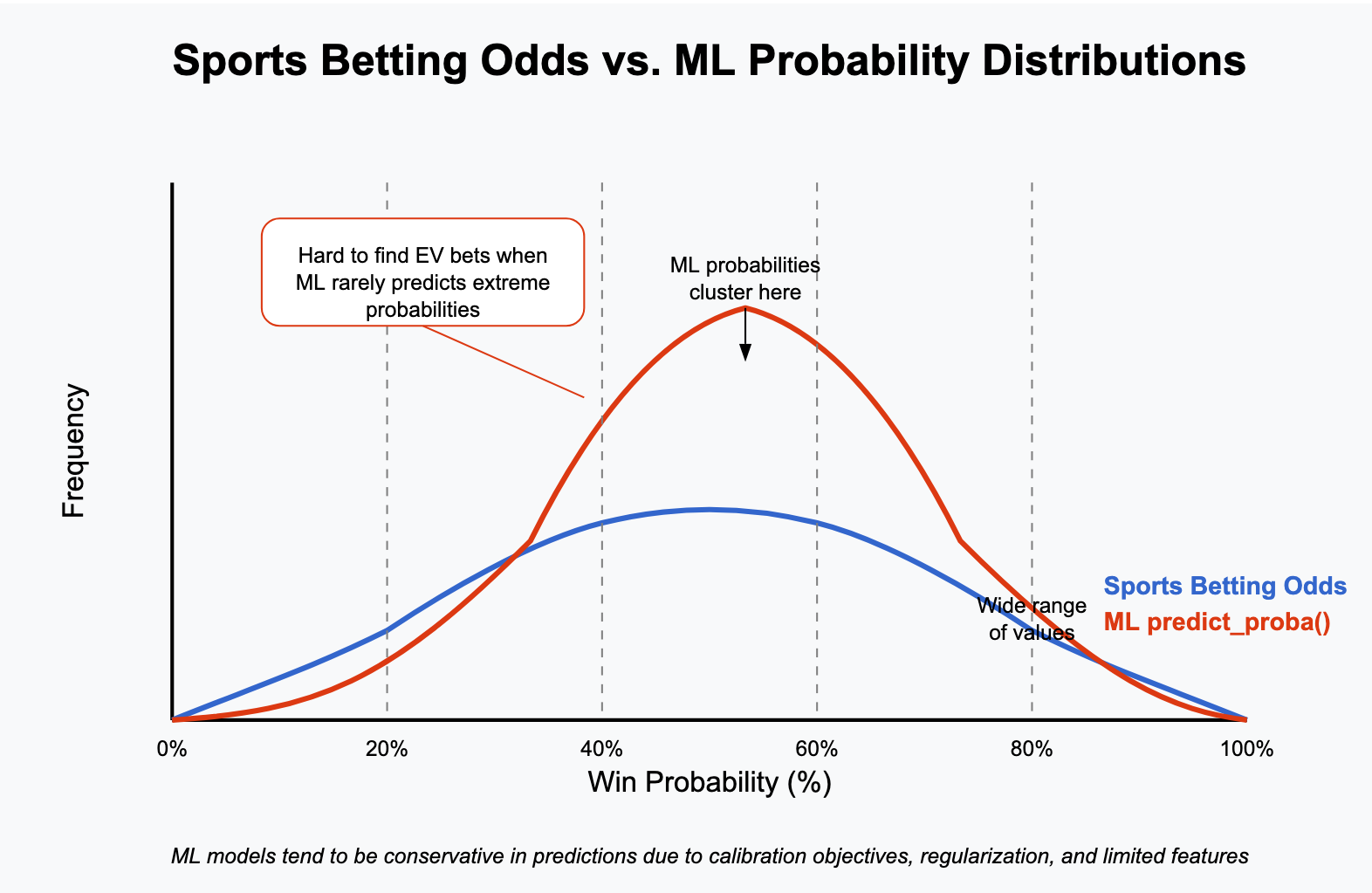I gave AI access to my odds database and told it to do analysis on the data. This is the result. I double checked most of the results but bear in mind there might still be minor discrepancies and also note that my odds data is not 100% comprehensive, I think I have about 70%(?) coverage of all the fights in 2024/2025.
TL;DR: The Paradox
2025 was more precise, but less accurate. 2024 saw Vegas accuracy at 71% and 2025 saw Vegas accuracy at 64%, a startling decline. Betting markets became more efficient (less line movement, fewer extreme swings), suggesting sharper pricing. However, Vegas's predictions actually got worse—favorites won less often, and the Brier score (a measure of prediction accuracy) increased, meaning less accurate forecasts.
The Core Paradox
When we analyze betting markets, we typically expect efficiency and accuracy to go hand-in-hand. More efficient markets should mean better predictions. But 2025 broke that assumption.

Figure 1: Markets became more efficient (median movement decreased), but Vegas accuracy declined (Brier score increased)
Where Did Vegas Go Wrong?
To understand why Vegas became less accurate despite more efficient markets, we need to look at calibration—how well Vegas's implied probabilities matched actual outcomes.

Figure 2: Expected vs Actual Win Rates by Probability Bucket. Points on the diagonal line = perfect calibration
The calibration plot reveals a critical issue: Vegas significantly underestimated favorites in 2025, particularly in the 60-70% probability bucket. In 2024, Vegas was well-calibrated for this range (64.9% actual vs 65.1% expected). But in 2025, favorites in this bucket won only 58.0% of the time when Vegas expected 65.5%—a 7.5 percentage point miss.
Sharp Money Influence Declining
One explanation for more efficient markets is that sharp bettors (professional bettors with sophisticated models) had less influence in 2025. When sharp money moves lines significantly, it creates volatility. Less sharp influence means tighter, more stable lines.
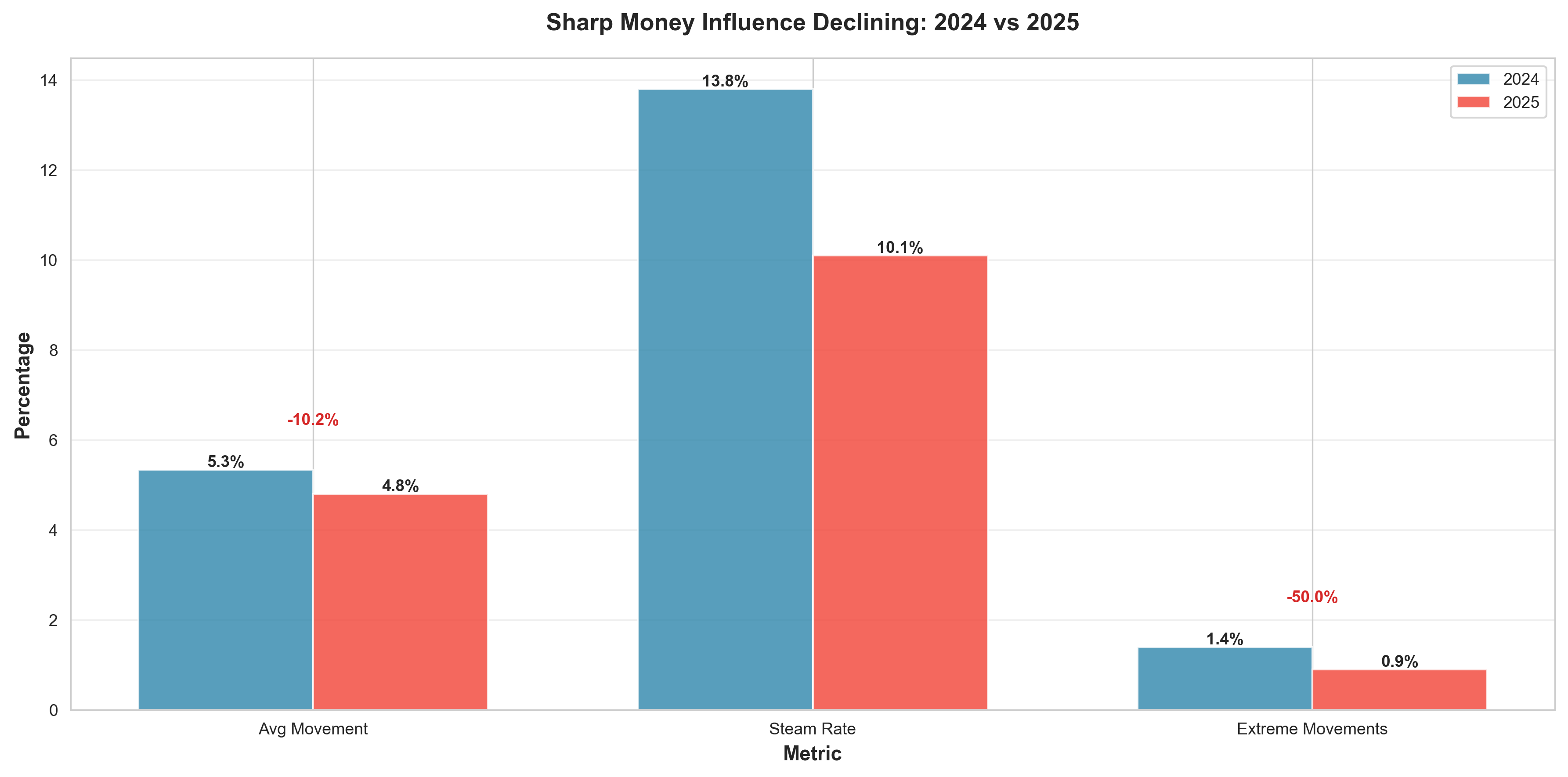
Figure 3: Sharp money influence declined across all metrics in 2025
- Average Movement: Decreased from 5.34% to 4.80% (-10.2%)
- Steam Bets: Decreased from 13.8% to 10.1% (-3.7 percentage points)
- Extreme Movements (>20%): Decreased from 1.4% to 0.9% (-50%)
"Steam bets" are rapid, coordinated line movements that typically indicate sharp money entering the market. The decline in steam bets suggests either:
- Sharps found fewer value opportunities (markets already efficient)
- Sharps were less active in 2025
- Public bettors got smarter, reducing the need for sharp correction
Public Getting Smarter: Favorites Moving Against Public Money
One of the most interesting trends in 2025 was the increase in favorites whose odds worsened (got longer) despite being the public favorite. This is a key indicator of sharp money betting against public sentiment.
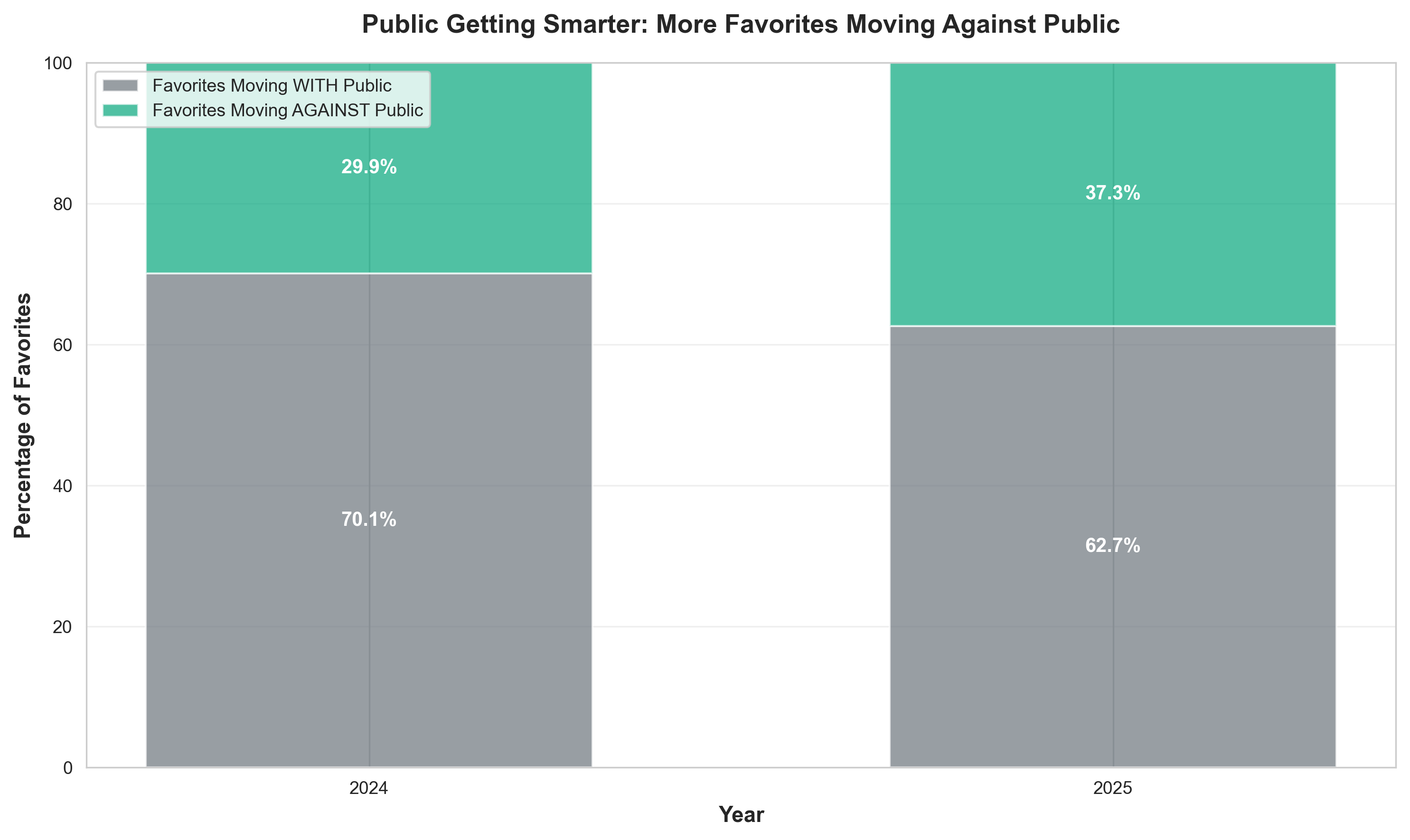
Figure 4: Percentage of favorites moving with vs against public money
Understanding "Favorites Moving With vs Against Public"
Favorites Moving WITH the Public: When a fighter opens as the favorite and their odds get better (lower odds, higher implied probability) as the fight approaches. This happens when public money floods in on the favorite, driving the line in their favor. Example: A fighter opens at +150 (40% implied) and closes at +120 (45% implied) because everyone bets on them.
Favorites Moving AGAINST the Public: When a fighter opens as the favorite but their odds get worse (higher odds, lower implied probability) as the fight approaches. This is a classic sign of sharp money betting against the public favorite. Example: A fighter opens at -200 (67% implied) but closes at -150 (60% implied) because sharps bet the underdog, moving the line against public sentiment.
Why This Matters: When favorites move against public money, it often means sharp bettors see value in the underdog. The increase from 29.9% to 37.3% suggests either sharps found more value betting against favorites, or public bettors were less informed, creating more opportunities for sharp correction.
In 2024, 29.9% of favorites moved against public money. In 2025, this increased to 37.3%—a +7.4 percentage point increase. This suggests sharp bettors found more value betting against favorites, or that public bettors were less accurate in their initial assessments.
Temporal Patterns: When Steam Happens
Not all months are created equal when it comes to betting activity. February and October 2025 saw the highest steam bet rates, suggesting these months had the most sharp betting activity or the most mispriced lines.
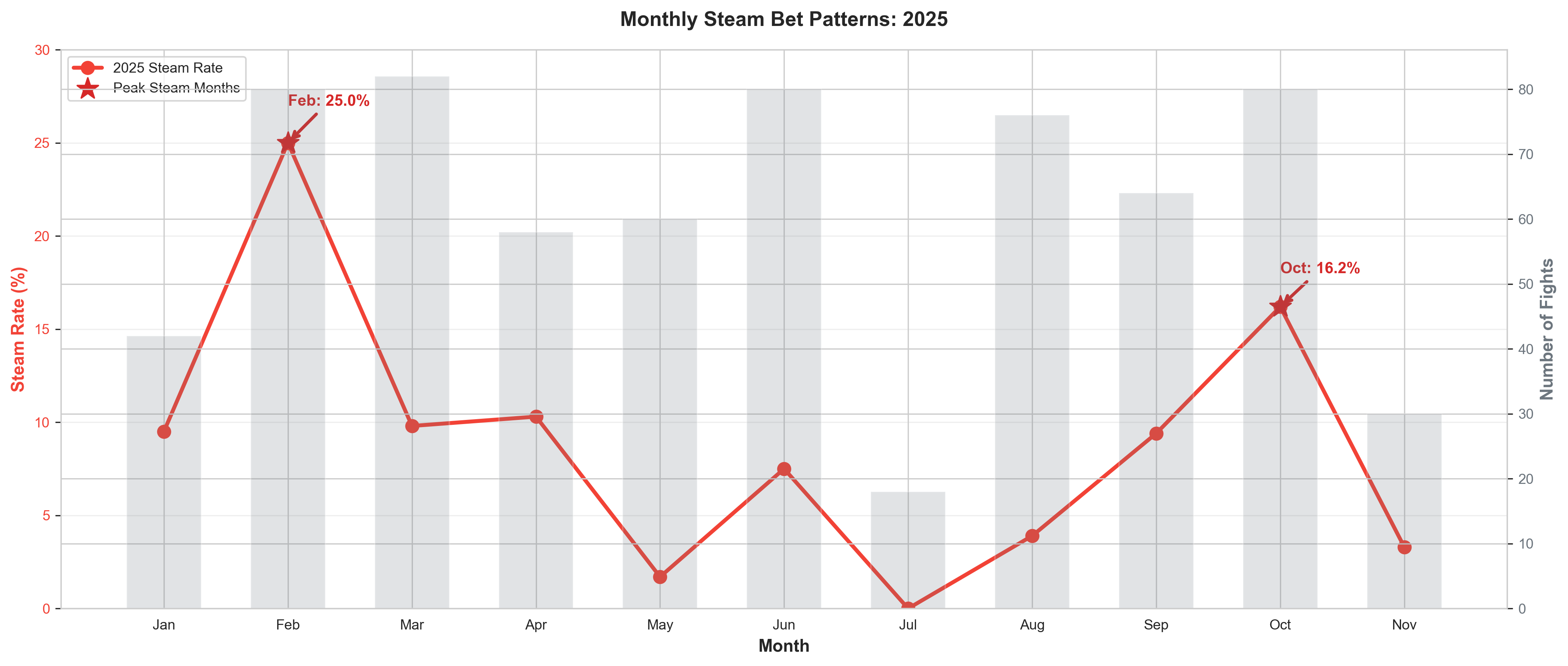
Figure 5: Monthly steam bet rates in 2025, with fight counts shown in background
February 2025: 25.0% steam rate—the highest of the year. This suggests significant sharp activity or major line corrections during this period.
October 2025: 16.2% steam rate—the second highest. This could indicate high-profile fights with significant betting interest or mispriced lines.
July 2025: 0.0% steam rate—the lowest, with only 18 fights. This suggests either very efficient initial pricing or limited sharp interest.
The Biggest Line Movements of 2025
Some fights saw dramatic line movements, indicating significant sharp money or late-breaking information. Here are the most extreme cases:
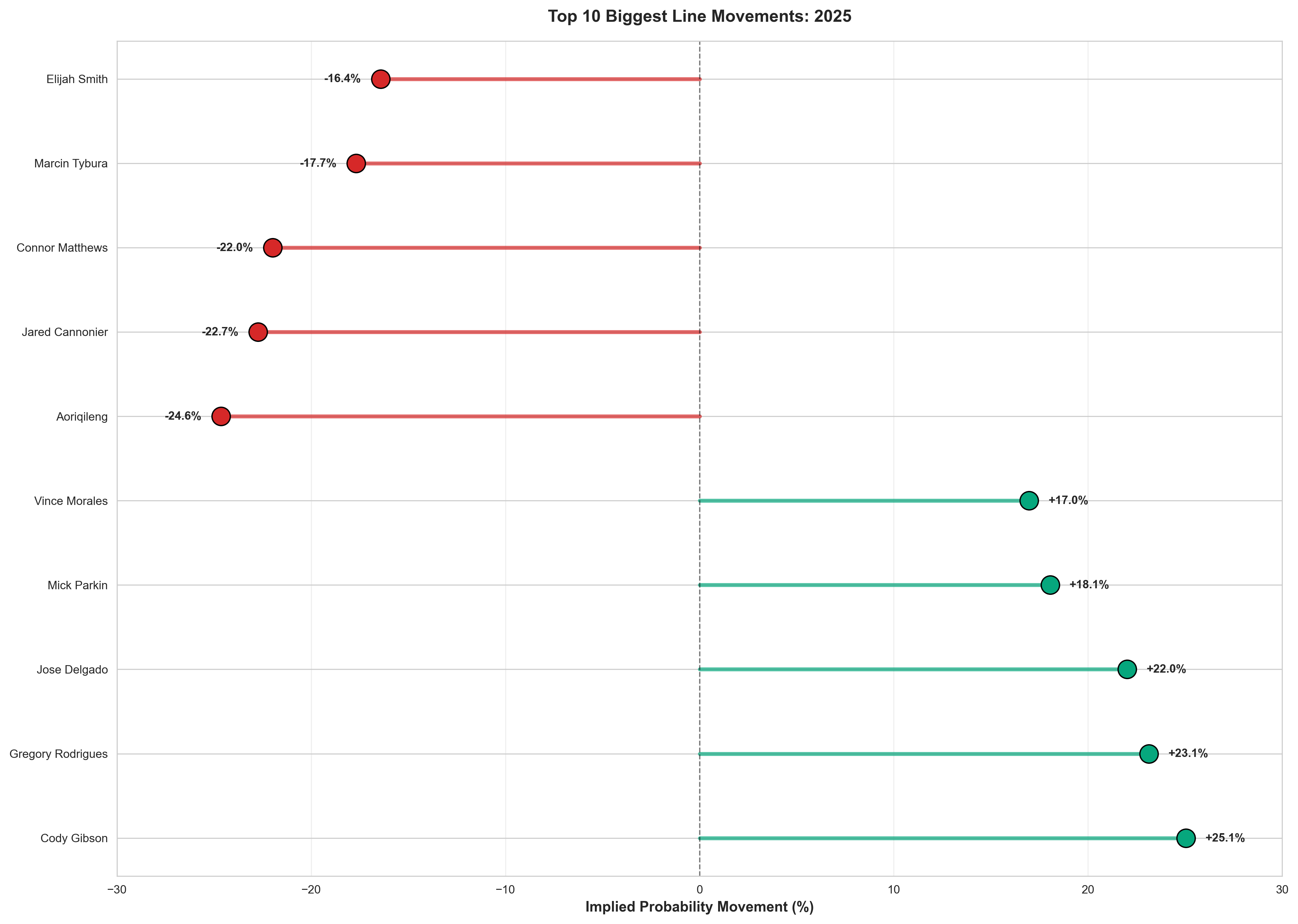
Figure 6: Top 10 biggest implied probability movements in 2025
Biggest Positive Movement: Cody Gibson saw his implied probability increase by +25.05% (from 40.8% to 65.9%) against Aoriqileng. This massive move suggests sharp money heavily favored Gibson, or late-breaking information changed the assessment.
Biggest Negative Movement: Aoriqileng (in the same fight) saw his implied probability decrease by -24.65% (from 63.0% to 38.3%). This is the flip side of Gibson's movement—when one fighter's odds improve dramatically, their opponent's must worsen.
Opening vs Closing: Market Learning
One way to measure market efficiency is to compare opening odds (the initial line) to closing odds (the final line). If markets are learning and incorporating information, closing odds should be more accurate than opening odds.
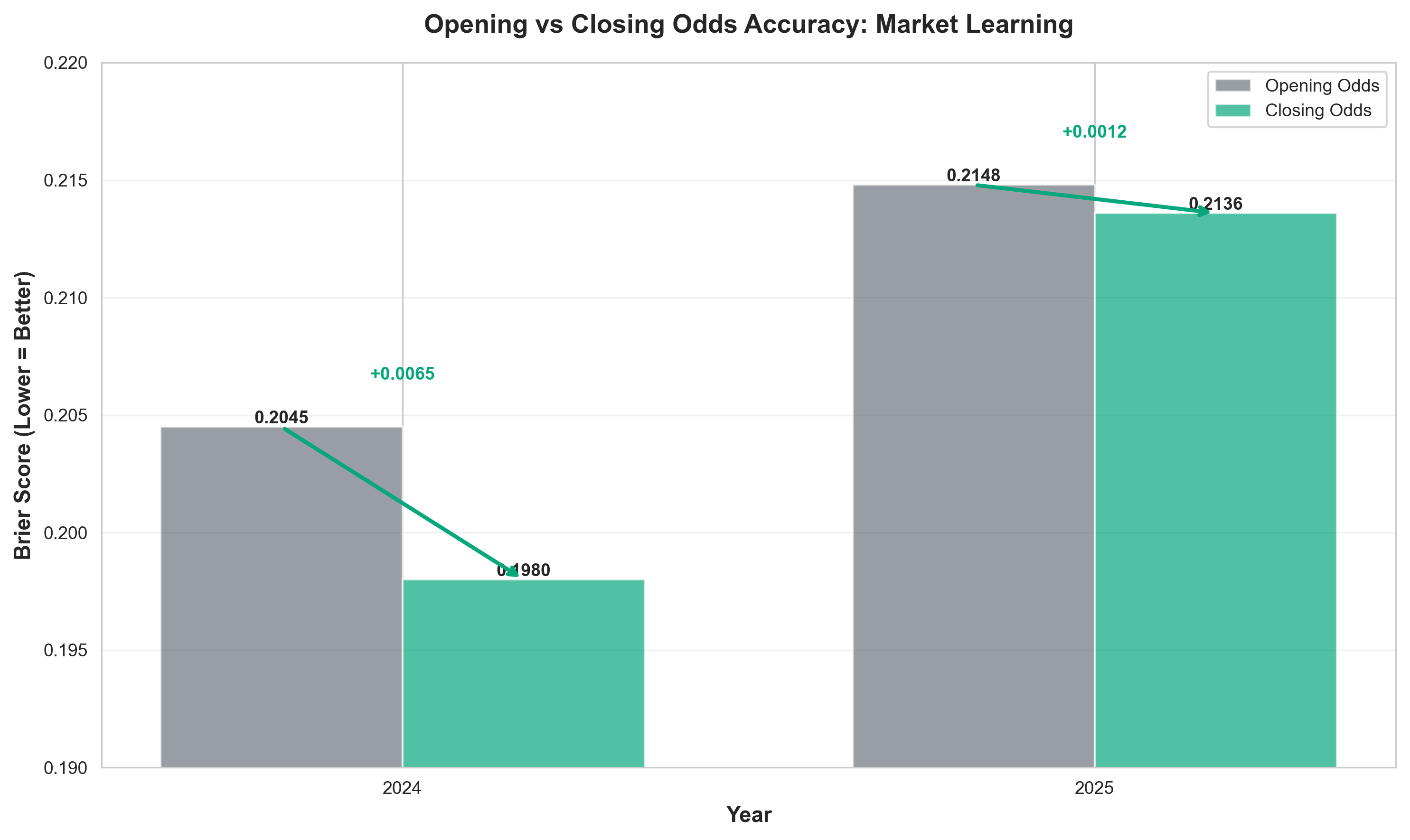
Figure 7: Brier scores for opening vs closing odds. Lower Brier score = better accuracy
In both years, closing odds were more accurate than opening odds, confirming that markets do learn and incorporate information. However, the improvement was much smaller in 2025:
- 2024: Opening Brier 0.2045 → Closing Brier 0.1980 (+0.0065 improvement)
- 2025: Opening Brier 0.2148 → Closing Brier 0.2136 (+0.0012 improvement)
This suggests that in 2025, opening lines were already closer to optimal, leaving less room for improvement. However, the overall accuracy was still worse than 2024, indicating a systematic calibration issue rather than just initial mispricing.
Fighter-Specific Storylines
Some fighters consistently saw significant line movement, suggesting the market was frequently mispricing their fights or that sharp bettors consistently found value betting on (or against) them.
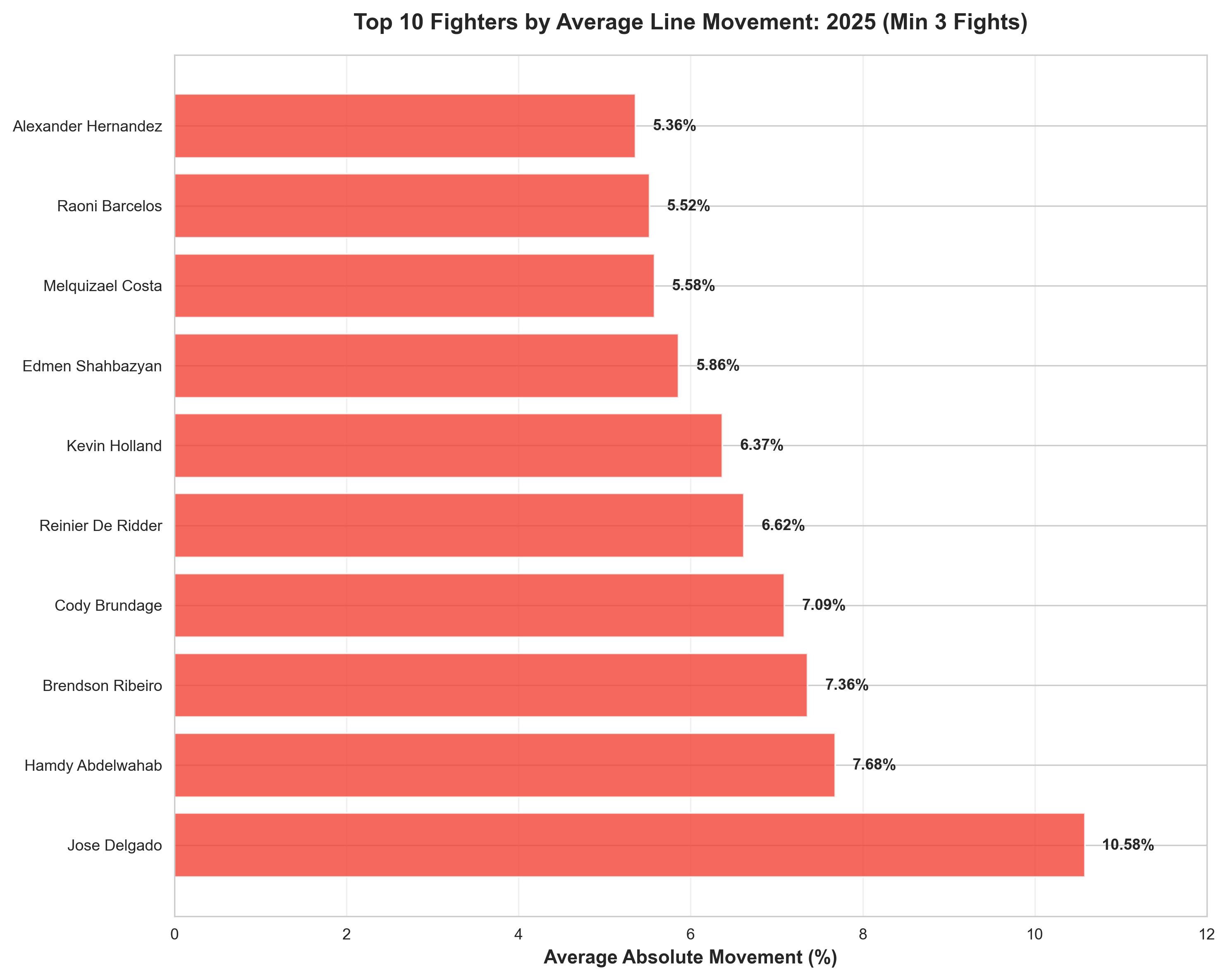
Figure 8: Top 10 fighters by average absolute line movement in 2025 (minimum 3 fights)
Jose Delgado led the pack with an average movement of 10.58% across 3 fights, with odds improving in 2 of those fights. This suggests the market consistently undervalued Delgado initially, and sharp money corrected the line.
Distribution of Movements: Less Extreme Tails
The overall distribution of line movements shifted in 2025, with fewer extreme movements and a tighter distribution around the median.
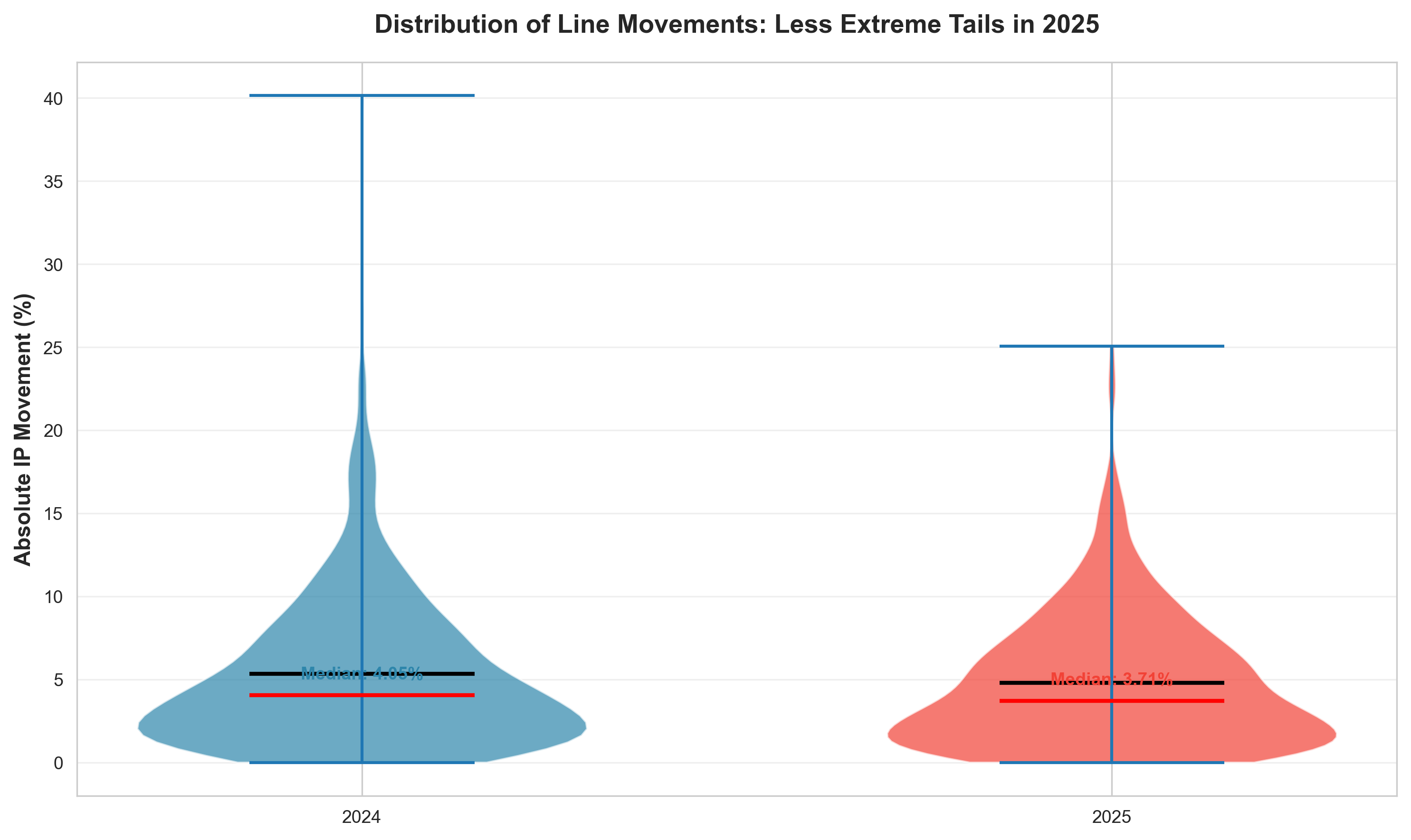
Figure 9: Distribution of absolute line movements. Wider violins = more variation
The violin plot shows that 2025 had a tighter distribution with less extreme tail movements. The median decreased from 4.05% to 3.71%, and the standard deviation decreased from 4.90% to 4.12%. This confirms that markets became more stable and efficient, with fewer dramatic corrections.
Movement vs Accuracy: Individual Fight Analysis
Does more line movement correlate with better or worse accuracy? The scatter plot shows the relationship between absolute movement and prediction error for individual fights.
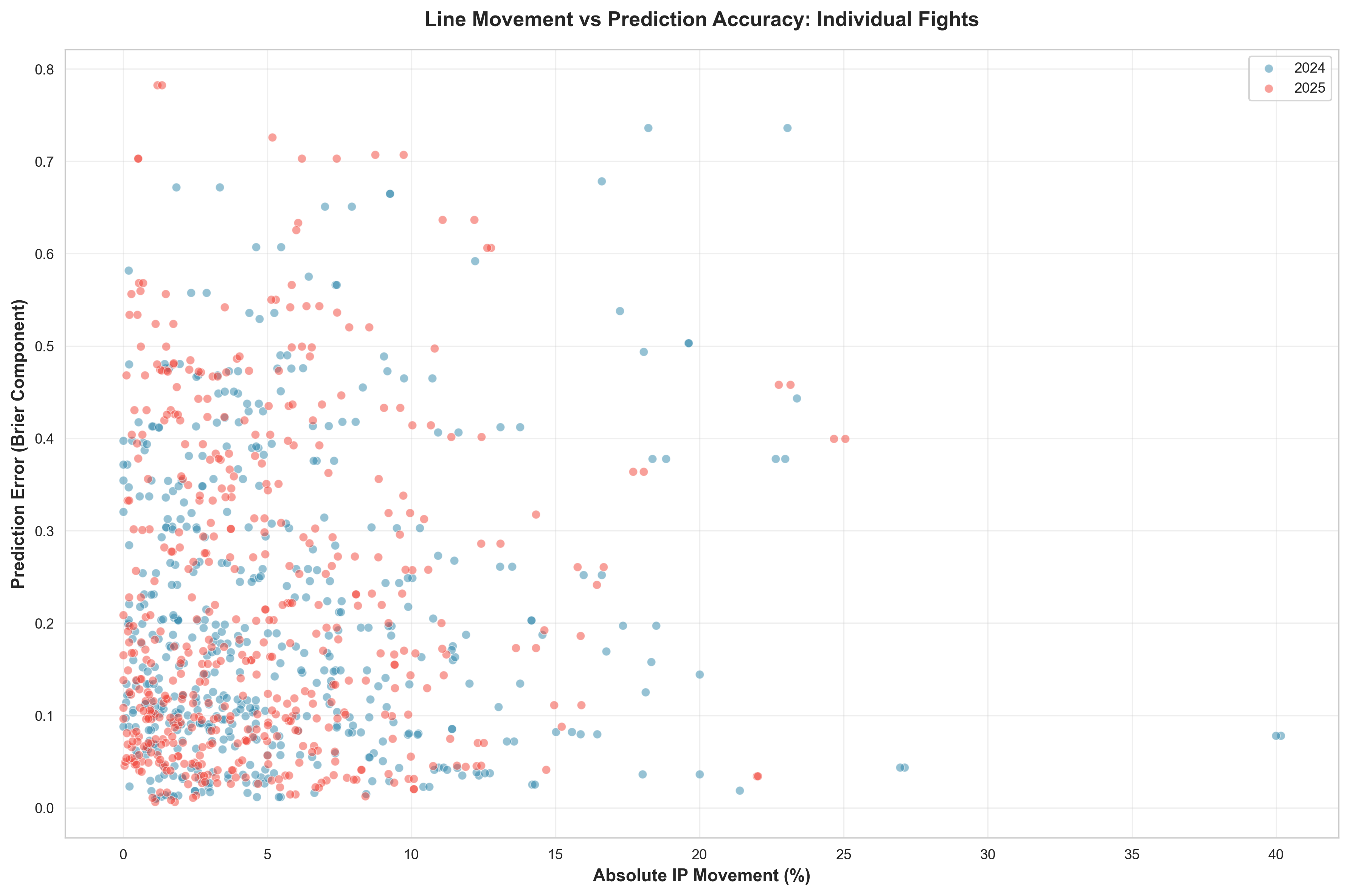
Figure 10: Relationship between line movement and prediction accuracy for individual fights
While there's no strong correlation visible, the plot shows that both years had fights with high movement and low error (sharp corrections that improved accuracy) as well as high movement and high error (corrections that made things worse). This suggests that movement alone doesn't guarantee accuracy—it depends on whether the movement is correcting a mispricing or overreacting to information.
Most Suspicious Fights: Statistical Anomalies
While analyzing the data, we identified fights with patterns that raise statistical eyebrows—combinations of factors that, while not proof of anything nefarious, are worth noting. We created a composite "suspicion score" that combines:
- Prediction Error (30%): How wrong Vegas was about the outcome
- Late Movement (25%): Dramatic odds changes in the final 7 days before the fight
- Heavy Favorite Loss (20%): Favorites with >70% implied probability that lost
- Extreme Favorite Loss (15%): Favorites with >80% implied probability that lost
- Underdog Late Win (10%): Underdogs who won with >5% late movement
Important Disclaimer
Suspicious patterns don't necessarily indicate rigging. These statistical anomalies could also be explained by:
- Sharp bettors with superior analysis or inside information
- Late-breaking news (injuries, weight issues, etc.)
- Legitimate upsets in a sport known for unpredictability
- Market inefficiencies that sharp money correctly identified
The suspicion score simply identifies fights where multiple unusual factors converged—worth investigating, but not proof of wrongdoing.
Top Suspicious Fights: 2024
Most Suspicious: Kyler Phillips vs Rob Font (October 19, 2024)
- Suspicion Score: 0.8096 (highest of the year)
- Context: Phillips was an 82.4% favorite but lost
- Late Movement: 12.16% movement in final 7 days
- Prediction Error: 0.6784 (Vegas was very wrong)
- Pattern: Extreme favorite loss with significant late movement
Other notable suspicious fights in 2024:
- Javid Basharat vs Aiemann Zahabi (Score: 0.7596) - 85.8% favorite lost
- Mateusz Rebecki vs Diego Ferreira (Score: 0.7536) - 81.6% favorite lost with 8.80% late movement
- Kennedy Nzechukwu vs Ovince Saint Preux (Score: 0.6974) - 83.7% favorite lost
Top Suspicious Fights: 2025
Most Suspicious: Rinya Nakamura vs Muin Gafurov (January 18, 2025)
- Suspicion Score: 0.7231 (highest of the year)
- Context: Nakamura was an 84.1% favorite but lost
- Late Movement: 7.14% movement in final 7 days
- Prediction Error: 0.7072 (Vegas was very wrong)
- Pattern: Extreme favorite loss
Other notable suspicious fights in 2025:
- Josias Musasa vs Carlos Vera (Score: 0.6907) - 85.2% favorite lost
- Oumar Sy vs Alonzo Menifield (Score: 0.6875) - 83.8% favorite lost
- Payton Talbott vs Raoni Barcelos (Score: 0.6523) - 88.4% favorite lost (highest IP favorite to lose)
Patterns in Suspicious Fights
Analyzing the suspicious fights reveals some patterns:
- Heavy favorites losing: Most suspicious fights involve favorites with >80% implied probability losing—these are inherently rare events that Vegas heavily favored.
- Late movement correlation: Many suspicious fights had significant late movement (>5%), suggesting information entered the market close to fight time.
- Underdog wins: Several suspicious fights featured underdogs winning with large late movement, potentially indicating sharp money betting against public sentiment.
Notable: Payton Talbott vs Raoni Barcelos stands out—Talbott was an 88.4% favorite (one of the highest IP favorites in the dataset) but lost. This represents a massive prediction error (0.7823) even though there was minimal late movement (0.16%), suggesting the initial line may have been fundamentally mispriced.
Conclusion: The Precision-Accuracy Paradox
What We Learned
2025 was more precise, but less accurate. Betting markets became more efficient—lines moved less, extreme swings decreased, and markets appeared more stable. This suggests sharper initial pricing and less need for correction.
However, Vegas's predictions became less accurate. Favorites won less often, and the Brier score increased. The calibration plot revealed that Vegas significantly underestimated favorites in the 60-70% probability range, suggesting a systematic overconfidence in favorites.
Why the Paradox? Several factors likely contributed:
- More efficient markets mean less room for sharp correction, but also less information incorporation. If opening lines are already tight, there's less opportunity for markets to learn.
- Sharp money declining could mean fewer corrections to public mispricing, allowing systematic biases to persist.
- Public getting smarter (or less active) might mean less public-driven mispricing, but also less information flow that sharps typically exploit.
- Vegas calibration issues suggest the sportsbooks may have been systematically overconfident in favorites, possibly due to model changes or different risk management approaches.
The Bottom Line: Efficiency doesn't always equal accuracy. More stable, precise markets can still produce less accurate predictions if there are systematic biases in the underlying models. For bettors, this paradox suggests that even in more efficient markets, there may be opportunities—especially if you can identify and exploit systematic calibration errors.
Analysis based on 802 fights in 2024 and 664 fights in 2025, using vigless implied probabilities from closing odds. Data sourced from features.odds table in mma-ai database.

